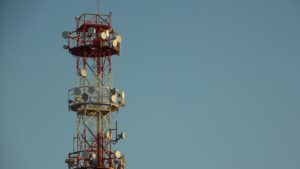As Afghanistan’s first-ever mobile phone provider, Afghan Wireless Communications Company has been at the forefront of the country’s technological renaissance for nearly 15 years. During this time, AWCC has helped bring some of today’s most cutting-edge technologies and practices, from 3.75G mobile technology to IPv6, to the country, thus ensuring that Afghans can more easily connect to one another and to the wider world.
 One of the most important technologies that AWCC has invested in is fixed wireless technology. A type of broadband wireless Internet service, fixed wireless leverages microwave-based technology to transmit high-speed data between two fixed locations (typically microwave towers). Using the microwave radio spectrum, information is beamed from a central location to a receiving dish (affixed to a tower) along a line-of-sight connection. AWCC and Afghanistan’s other mobile phone providers have already built a total of three microwave rings in order to bring dependable wireless Internet service to all parts of the country.
One of the most important technologies that AWCC has invested in is fixed wireless technology. A type of broadband wireless Internet service, fixed wireless leverages microwave-based technology to transmit high-speed data between two fixed locations (typically microwave towers). Using the microwave radio spectrum, information is beamed from a central location to a receiving dish (affixed to a tower) along a line-of-sight connection. AWCC and Afghanistan’s other mobile phone providers have already built a total of three microwave rings in order to bring dependable wireless Internet service to all parts of the country.
Fixed wireless technology is not, strictly speaking, a new application; however, it has become increasingly popular in recent years thanks to the benefits it offers over fiber-optic-based service, the long-time standard for broadband technologies. With fiber optics, systems convert data and information, like images, video, and e-mails, into a stream of light, which is then beamed along a thin, flexible thread of glass or plastic known as a fiber-optic line. But, while fiber-optic systems certainly have numerous advocates, many feel that the advantages offered by fixed wireless technology are greater. These advantages include the following:
Lower latency
 Latency describes the time it takes for a system to receive and process a command and send a reply. This is where we can most clearly see the benefits of fixed wireless networks over fiber-optic systems. Information in a fiber-optic network must travel down a physical line, traversing multiple points before reaching its destination. Each of these points increases the overall latency, as does the total distance the information must travel. As a result, fiber-optic networks are estimated to have a latency of 8.01 microseconds per mile, while microwave signals, using a single point-to-point connection, have a latency of only about 5.4 microseconds.
Latency describes the time it takes for a system to receive and process a command and send a reply. This is where we can most clearly see the benefits of fixed wireless networks over fiber-optic systems. Information in a fiber-optic network must travel down a physical line, traversing multiple points before reaching its destination. Each of these points increases the overall latency, as does the total distance the information must travel. As a result, fiber-optic networks are estimated to have a latency of 8.01 microseconds per mile, while microwave signals, using a single point-to-point connection, have a latency of only about 5.4 microseconds.
To be sure, latency differences of a few microseconds are miniscule (so small that humans can’t actually perceive them, but they are nevertheless critical in particular contexts. For example, large stock exchanges like the New York Stock Exchange and the Chicago Stock Exchange depend on constant communication. Electronic trading information travels continuously between the two centers, and with computers processing millions of trading decisions in a fraction of a second, even a micro-delay can have major implications. According to an article in Information Week, when it comes to trading applications, a major brokerage with a 1-millisecond advantage can boost its earnings by $100 million per year.
Speed
As mentioned above, distance is an important factor to consider when comparing fixed wireless and fiber-optic networks. It not only affects latency, but it also alters the speed at which data can travel. At present, both fixed wireless and fiber optics can transmit data at extremely high speeds, but fiber will always be impacted more strongly by the distance the information needs to travel. With fiber, the fact that the physical cable can’t always run the shortest distance between two points means that the information will always have to travel further than it needs to, slowing down slightly in the process. Fixed wireless, on the other hand, is able to offer potentially higher speeds because it can simply travel point-to-point in a straight line.
Reduced installation time and costs
 The microwave radio towers required for fixed wireless systems are much easier and less costly to install than the more complex infrastructure involved in fiber-optic systems. For maximum safety and efficiency, workers must bury fiber-optic cable at least five feet below ground, an undertaking that can be very difficult when the route crosses challenging territory like mountains or rivers. They must then incorporate the lines into homes or other buildings, which can result in complicated retrofitting procedures. Taken all together, the various installation steps for fiber can be time-consuming and expensive. But when existing towers are in place, people can install microwave links for fixed wireless in just a few days.
The microwave radio towers required for fixed wireless systems are much easier and less costly to install than the more complex infrastructure involved in fiber-optic systems. For maximum safety and efficiency, workers must bury fiber-optic cable at least five feet below ground, an undertaking that can be very difficult when the route crosses challenging territory like mountains or rivers. They must then incorporate the lines into homes or other buildings, which can result in complicated retrofitting procedures. Taken all together, the various installation steps for fiber can be time-consuming and expensive. But when existing towers are in place, people can install microwave links for fixed wireless in just a few days.
Scalability and flexibility
Because it involves less physical infrastructure, a fixed wireless network offers greater scalability and flexibility than a fiber-optic system. Rather than having to go through the laborious process of laying more cable, all it takes to boost capacity in a fixed wireless system is the addition of more satellite receiver dishes. This makes it easier for telecommunications companies to better serve existing customers and to expand coverage more effectively into remote or isolated areas that would be difficult to reach with fiber-optic cables.

